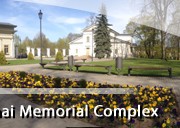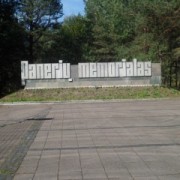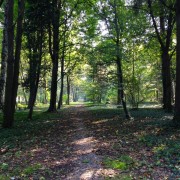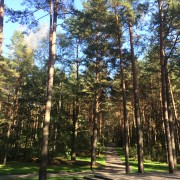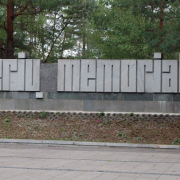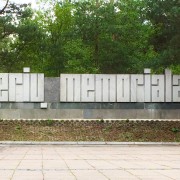Paneriai Forest: Laid to Rest
By: Madeline Diorio
It is like an old story heard throughout childhood from older generations and textbooks so thick one might wonder if they will ever be able to grasp the concepts inside of them. We all know of the Holocaust, of the genocide of the Jews, and of Hitler and the Nazis. We all have a common knowledge of the purely barbaric manor in which the Nazi regime sought to liquidate the Jewish population from Europe. I believed that these stories that I have grown up listening to and have been taught could not get any more gruesome, they cannot get worse, and these people who carried out these unimaginable tasks could not get any crueler. It was not until I embarked on this 17 day seminar that I realized how impossibly wrong I could be. After meeting so many inspirational people and being in places with such a somber history there is one place in particular that I still think about and revisit in my thoughts every day. Paneriai Forest is the site of the first mass murders and the start of the Holocaust. Timothy Snyder states that approximately 72,000 Jewish people were liquidated in the forest in his piece, “Neglecting the Lithuanian Holocaust.” Upon visiting the forest one will learn that an estimated 30,000 additional people were killed at Paneriai including Polish intellectuals, members of the Polish Underground Home Army and Soviet Prisoners of War. I was awestricken when I realized that twenty to 25,000 people were murdered in this pit in front of where I stood. Even more striking there were seven such pits.
Walking along the trenches, standing above these graves, and hearing the horrifying stories of how these acts of violence were taken out against these innocent people still gives me chills. I think the reason this place remains the hardest part of our journey to deal with may be that I never expected the forest to seem so beautiful. I thought it would be eerie and dark and feel as if something were lurking in the trees around us. But instead I felt like the one lurking, as if I were imposing on those who were stripped of their lives in these pits. As I stood there looking down in to the pit, I tried to fathom the idea of so many souls being taken, bodies just left there. However the most striking thing about standing above these pits was the story we were told about the mothers hiding their babies in the pile of clothes that were forcibly removed from the victims. It was not necessarily the story alone that distressed me the most but the conversation I had with a class mate when we were given time to ourselves in the forest. It was I and one other student who decided to turn around and revisit the grave where our tour guide told us of this story. As we stood there in silence looking into the pit and around the pit each trying to picture the true monstrosity that occurred, finally the words were spoken, “What would you do if you were a mother in that situation?” The words just sat there in the silence around us and finally it hit me. This place, a place that could hold so much beauty instead holds nothing but tragedy. It is this precise moment that I reflect on more than any other. I never gave my classmate an answer, at least not that I can recall, instead I just kept asking more questions. Even now trying to reflect on this moment there are still no words and it is that reason that I feel so compelled to write about it.
The impact of that moment is still unsettling to me. What would I do if I were walking along those trenches to my death, child in arm? I could not imagine being in a situation where I would have to make that type of decision. We take so many things for granted in life such as traveling, education, friends, and family. I have always known that I have taken most of the blessings I have in life for granted. It wasn’t until I was in Paneriai Forest that it all came at once, the realization that these people also thought they had their whole lives ahead of them. They wanted to travel and go to school as I do, they wanted to settle down and have a family. They dreamt of watching their young children grow up to be musicians and intellectuals, business owners and doctors. How selfish it felt of me to be there alive and to know that I was leaving there alive while I knew that these people: men and woman, mothers and children never got to leave this place alive. They had come here to their final resting spot.
There is one last piece of this reflection that I do want to make evident. Though this place meant nothing more than a tragic end of life to me at the beginning of our visit, by the end of the visit it meant so much more. As we pulled away from the forest I couldn’t help but cry. To shed a tear for all of those people whose lives ended in that forest. I realized something, that even though all of those beautiful souls were lost there, it was still a beautiful place. How lucky am I to be able to go to such a beautiful place and also get to leave it? I get the chance to make sure that the memories and the dreams of these people did not end in that forest, in those pits. I get to spread the story that we don’t hear about in the textbooks. I get to be that older generation one day. I can share my story of the places I have been and urge others to visit as well. I get to reflect on this moment for the rest of my life, well, after this page ends or my time studying this subject comes to a close. I will never forget the feeling of walking around that pit, or the conversation that still lays in silence between my classmate and I. No matter the tragedy that occurred in that forest, it is my responsibility to make sure the words “never again” are not an empty promise.

